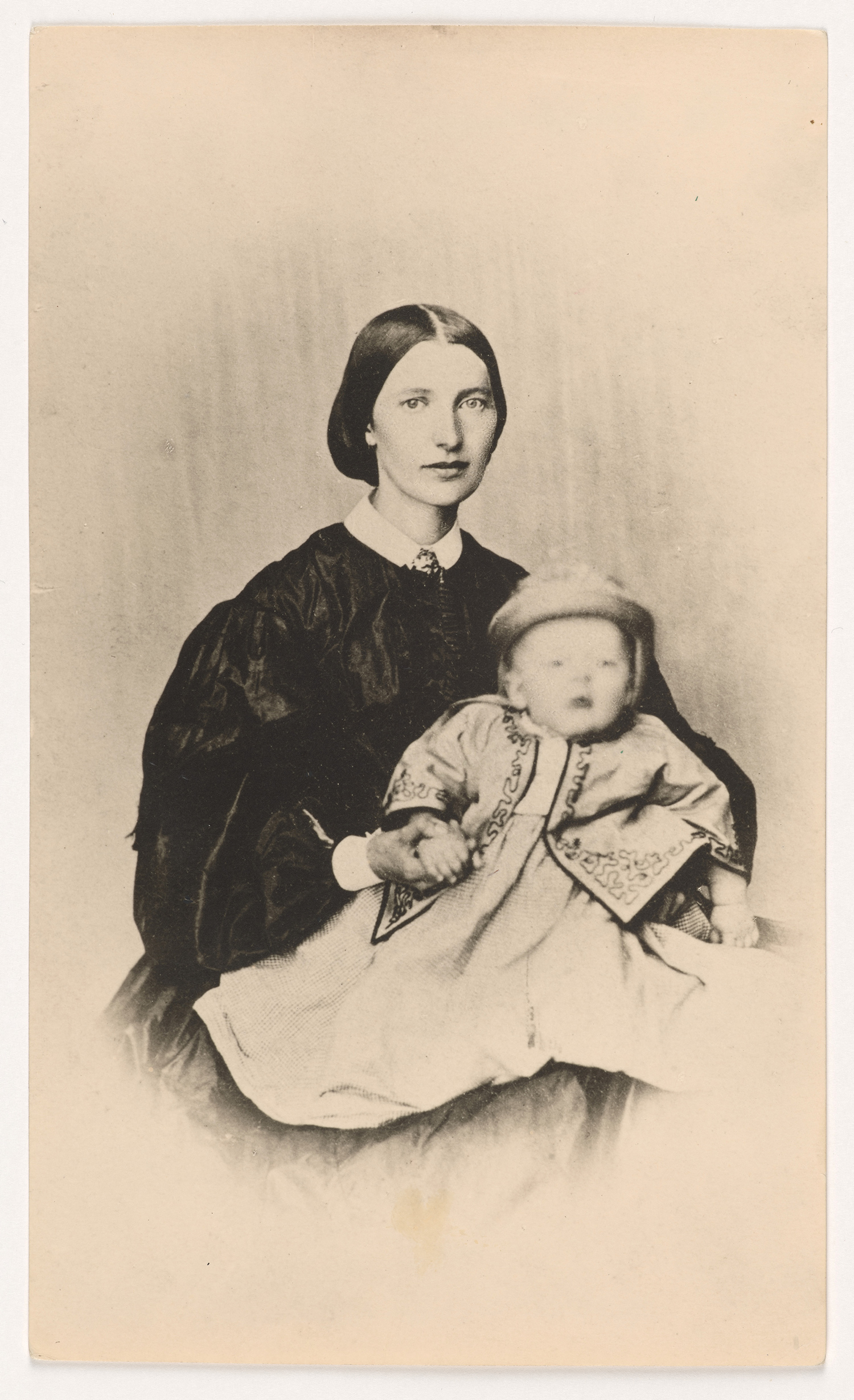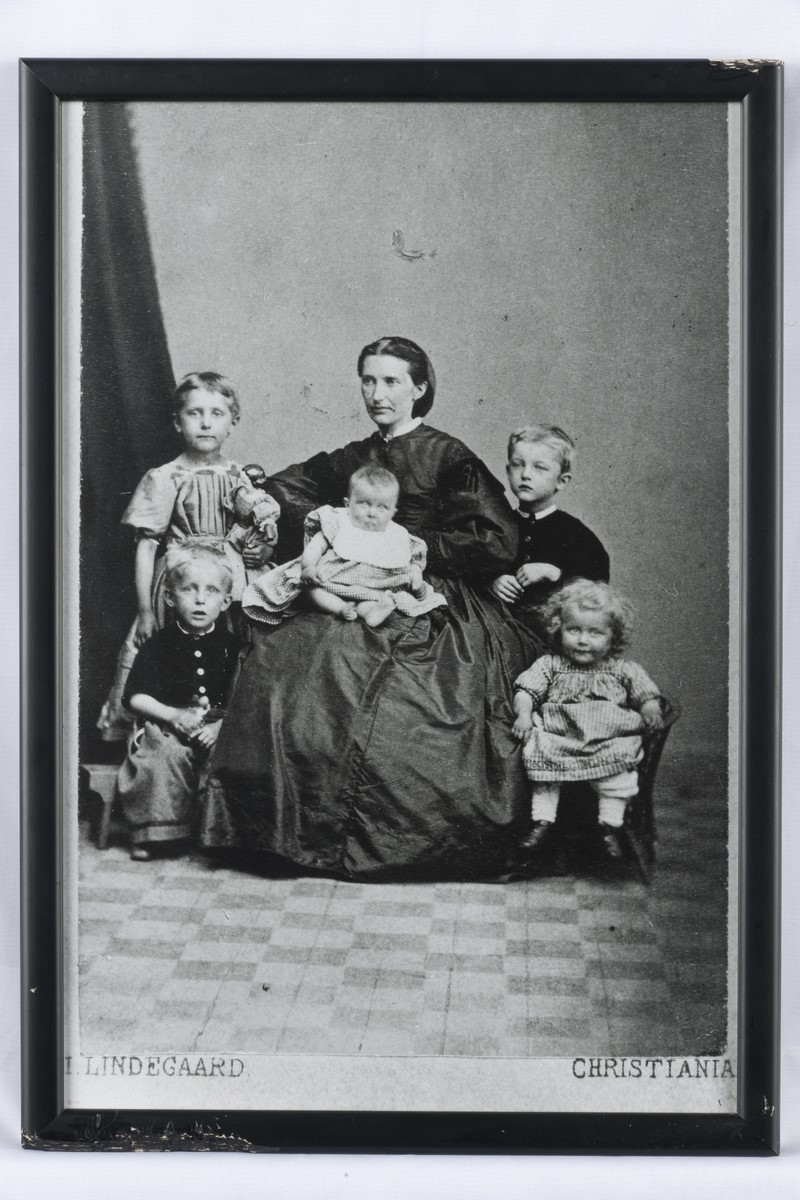
Mother Laura and the one year old Edvard Munch in 1864, wearing an elegant jacket, which is now in the collection of the museum.
Photo: Ukjent fotograf / Munchmuseet


See how it went when we unpacked Edvard Munch's baby jacket.

Laura Munch with her five children; Inger Marie, Johanne Sophie, Peter Andreas, Laura Cathrine and Edvard Munch on the right.
Photo: Munchs hus / Mekonnen Wolday